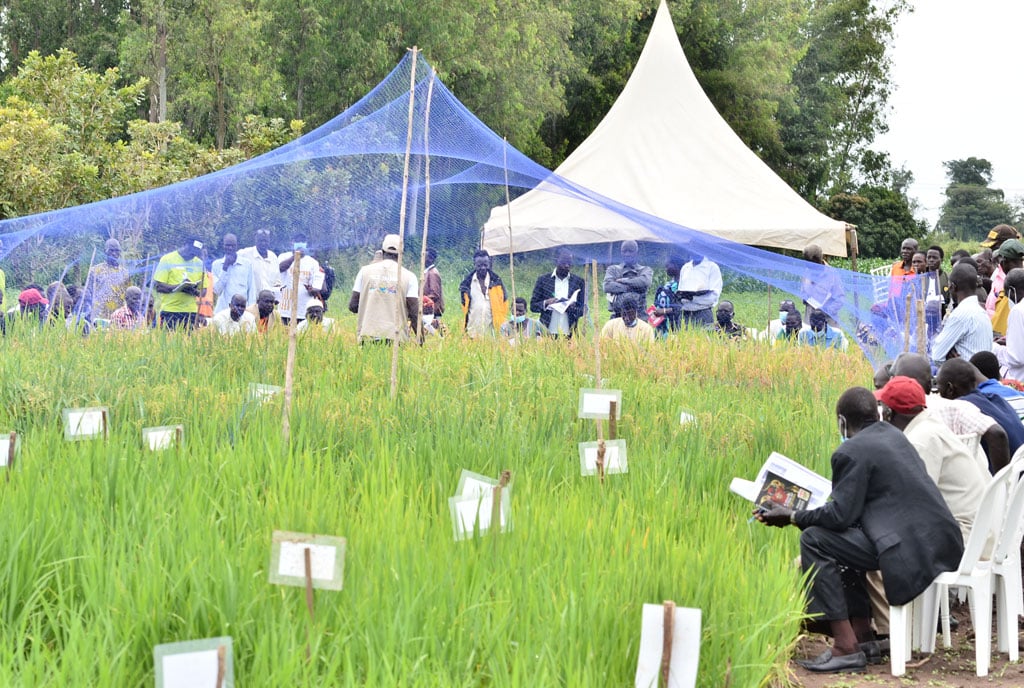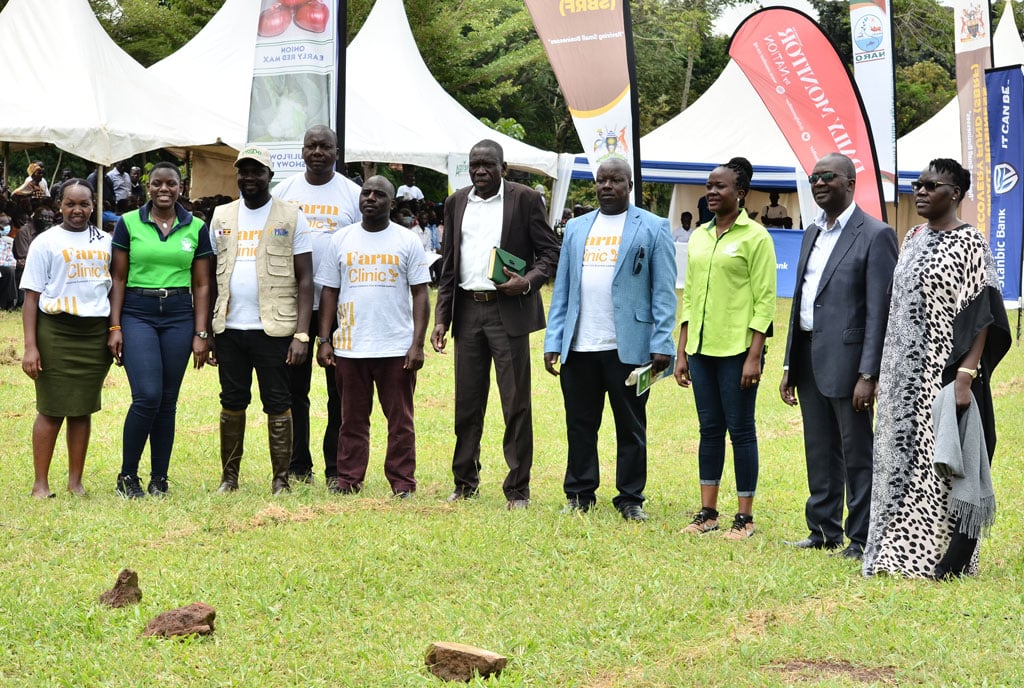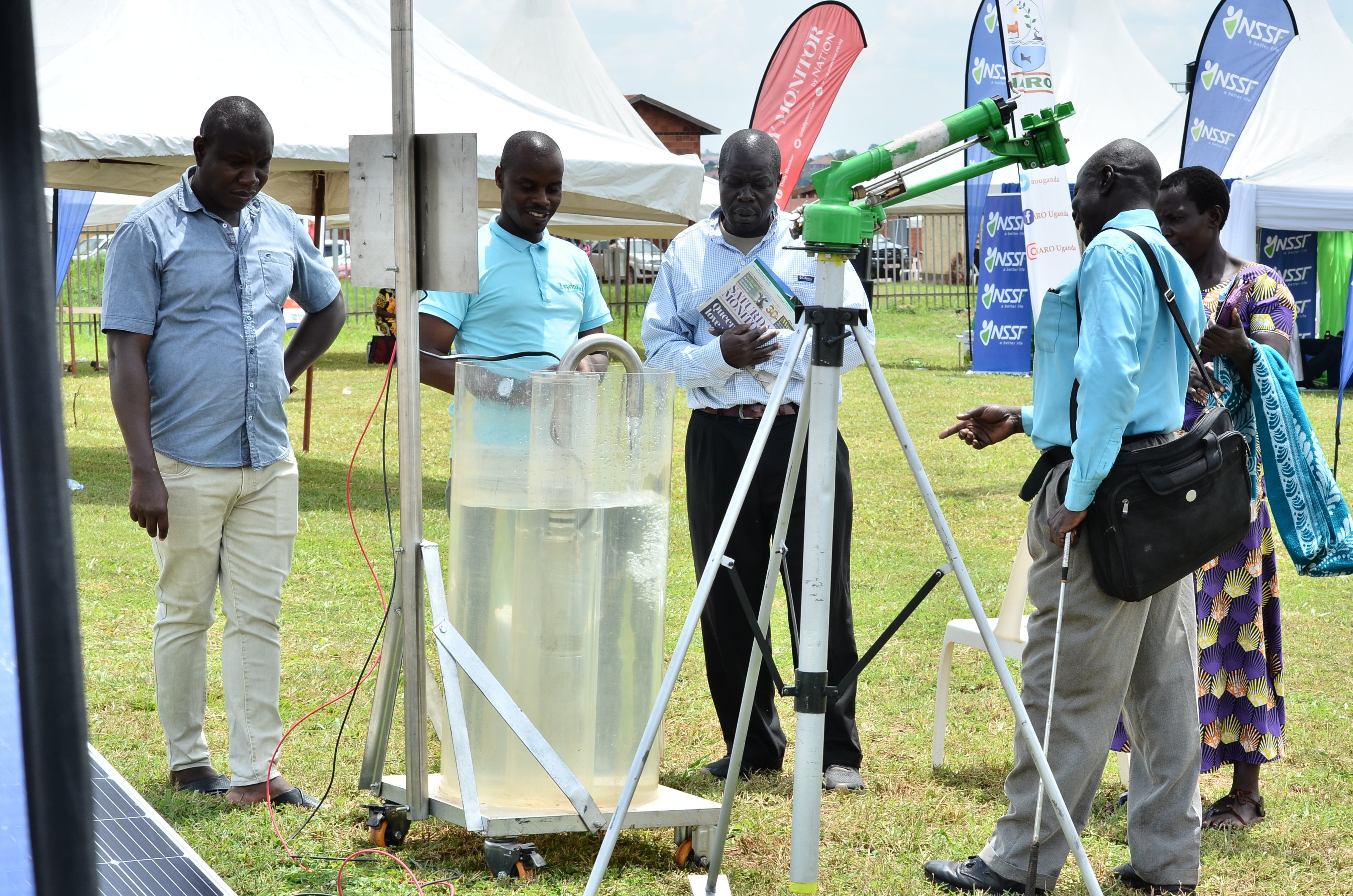Prime
A memorable day out at the Monitor Farm clinic for food producers

Stephen Opio trains farmers how to grow rice and also practice proper post-harvest handling. GEORGE KATONGOLE
What you need to know:
- Hundreds of farmers thronged the Seeds of Gold Farm Clinic at Ngetta Zardi in Lira District, for the much needed lessons on boosting agribusiness.
The potholed road snakes through an avalanche of mature mivule alongside the road in Ngetta Sub-county, to the Ngetta Zardi.
The facility, located some five kilometres off the Lira-Kitgum highway, is a rice, cotton, maize, oranges, mangoes, fish, cassava, shea-nut and soybean research station.

Research officer and expert fish breeder Howard Kasigwa explains the agronomy of fish feeding. PHOTO/GEORGE KATONGOLE
One drives through a cabro-paved driveway once they enter the centre’s gate. It is here that Seeds of Gold held its 30th farm clinic last Saturday.
Hundreds of farmers
The gates opened at 7am and farmers from various parts of the country flocked the centre armed with books, pens and questions ready to quench their thirst for agricultural information.
Ready to attend to them were dozens of agriculture experts. And various modern agricultural technologies were also on display, ranging from farm equipment and machinery, new seed varieties and fertilisers.

Farmers viewing some of the products on display. PHOTO/GEORGE KATONGOLE
Naro deputy director general, agriculture technology promotion, Dr Sadick Kassim, welcomed the farmers urging them to ask all the questions ranging from crop diseases, market, post-harvest handling to fertilisers.
Rice growing
Stephen Opio took farmers through best rice farming practices, from planting to harvesting and storage.
“Conducting a soil test is important. It enables one to know nutritional status of their farm and the kind of fertiliser ingredients one needs such as nitrogen, potassium and calcium,” advised the expert.
“Dig between 0–30cm and collect the soil. Then put in a well-labelled envelop and bring to us or any other institution for analysis,” he said.

To grow rice, it should first raised in a nursery for 21days. The seedlings are then transplanted in a well-prepared and levelled field.
Basal fertiliser such as DAP is then applied. And then first and second topdressing would be done using fertiliser rich in nitrogen at 21 and 42 days after transplanting, respectively.
According to Opio, the rice field should be kept flooded with 2-3cm (depth) of water until it reaches physiological maturity.
Water is then drained to allow ripening and drying of the grains for two weeks before harvesting. Common rice disease is blast, while pest is the stalk borer.
He urged farmers to embrace the latest technology to reduce post-harvest losses as opposed to doing it manually.
Advice
John Bull Otim from Kole District noted that there were so many quacks masquerading as crop and animal production experts, especially when one visits agrovets.

Opio advised him to work with certified agronomists and veterinary doctors as some agrovets are sometimes just out to make money.
The Uganda National Bureau of Standards (UNBS) also issues identification badges and service cards to verified agrovets, thus, a farmer should always demand to see the card.
Planting
To grow rice, farmers were advised to raise a nursery for 21 days. After 21 days, the seedlings are then transplanted in a well-prepared and levelled field.




